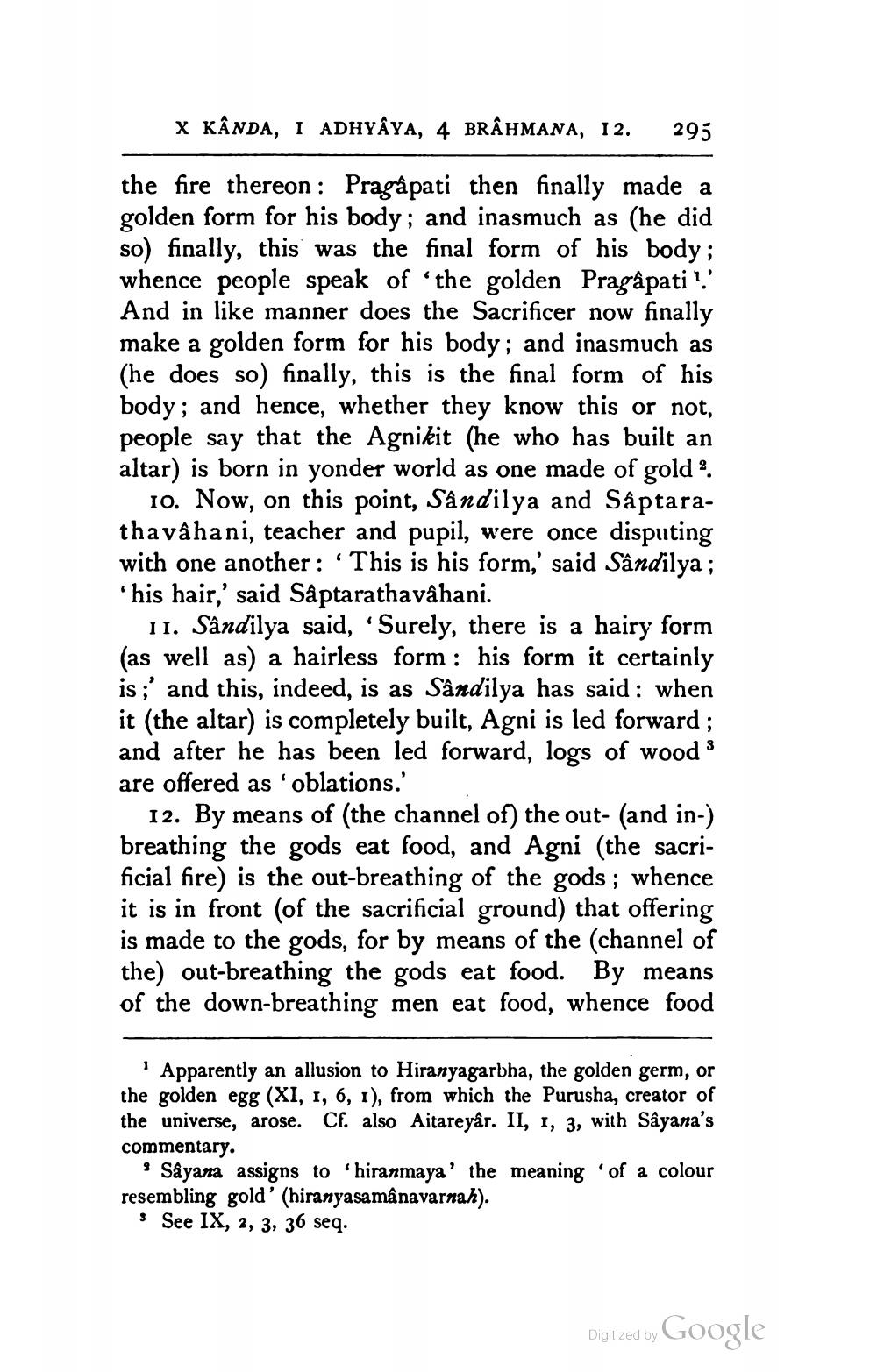________________
X KÂnda, I ADHYAYA, 4 BRAHMANA, 12.
295
the fire thereon: Pragâpati then finally made a golden form for his body; and inasmuch as (he did so) finally, this was the final form of his body; whence people speak of the golden Pragâpati?' And in like manner does the Sacrificer now finally make a golden form for his body; and inasmuch as (he does so) finally, this is the final form of his body; and hence, whether they know this or not, people say that the Agnikit (he who has built an altar) is born in yonder world as one made of gold ?.
10. Now, on this point, Sândilya and Saptarathavâhani, teacher and pupil, were once disputing with one another: 'This is his form,' said Sândilya ; his hair,' said Saptarathavâhani.
11. Sândilya said, 'Surely, there is a hairy form (as well as) a hairless form : his form it certainly is;' and this, indeed, is as Sândilya has said : when it (the altar) is completely built, Agni is led forward ; and after he has been led forward, logs of woods are offered as oblations.'
12. By means of (the channel of) the out- (and in-) breathing the gods eat food, and Agni (the sacrificial fire) is the out-breathing of the gods; whence it is in front (of the sacrificial ground) that offering is made to the gods, for by means of the (channel of the) out-breathing the gods eat food. By means of the down-breathing men eat food, whence food
Apparently an allusion to Hiranyagarbha, the golden germ, or the golden egg (XI, 1, 6, 1), from which the Purusha, creator of the universe, arose. Cf. also Aitareyâr. II, 1, 3, with Sâyana's commentary.
. Såyana assigns to "hiranmaya' the meaning of a colour resembling gold' (hiranyasamânavarnak).
3 See IX, 2, 3, 36 seq.
Digitized by Google




